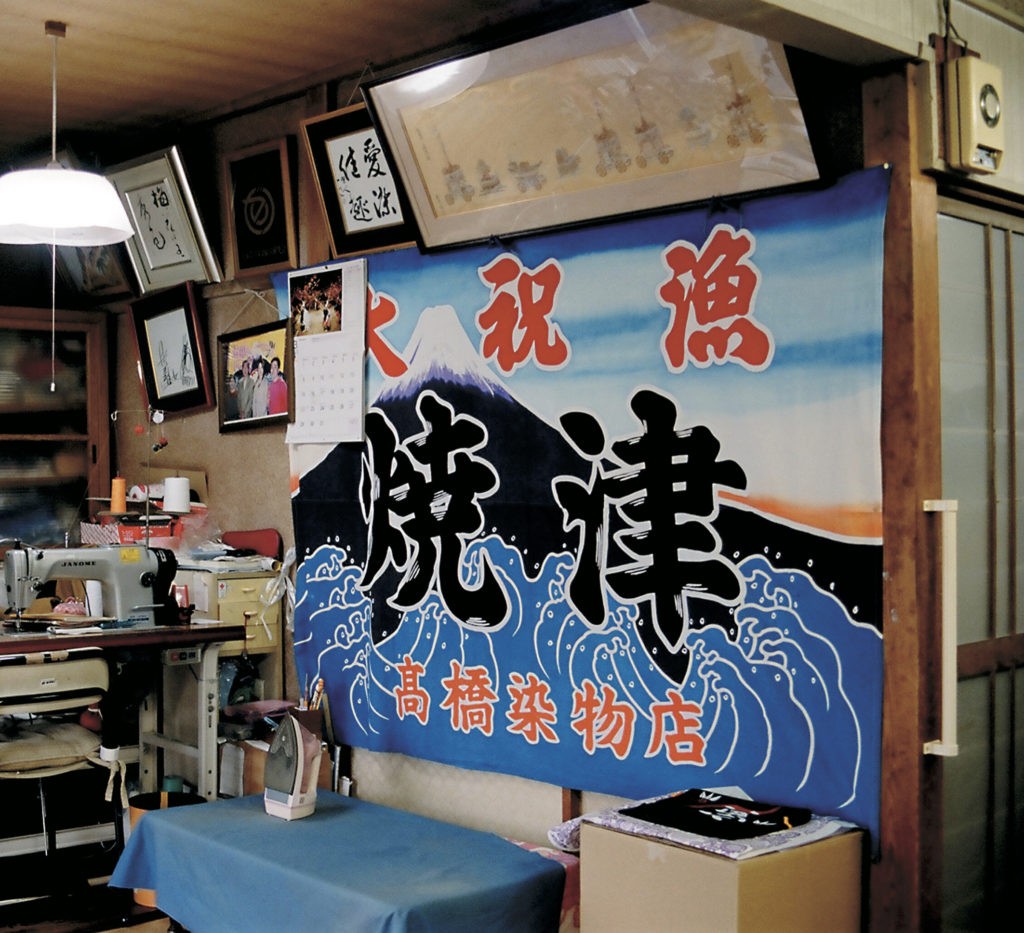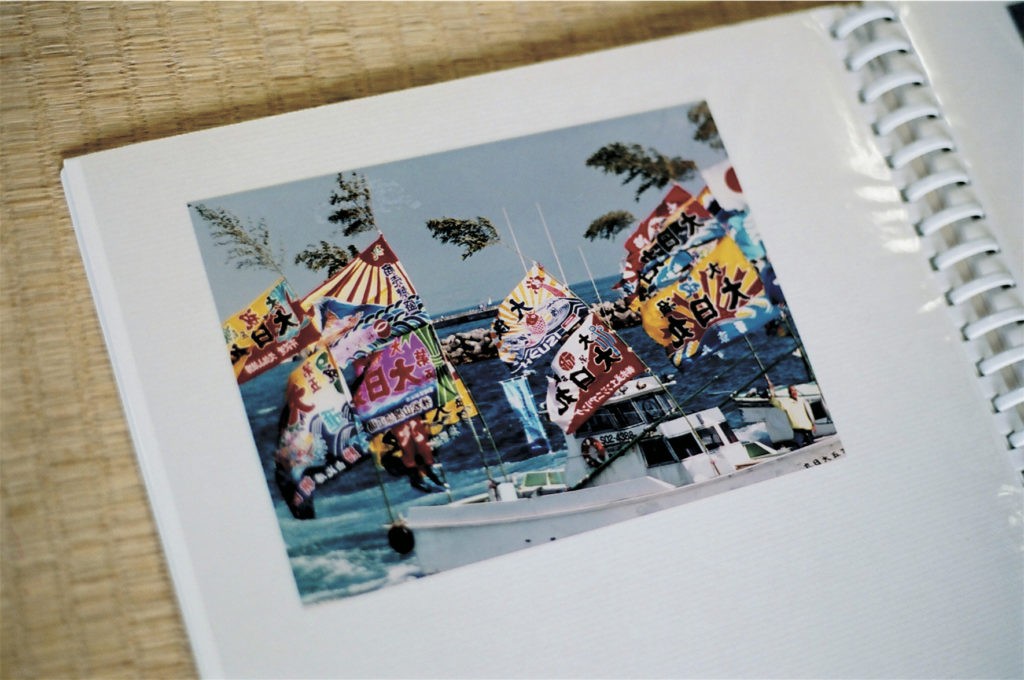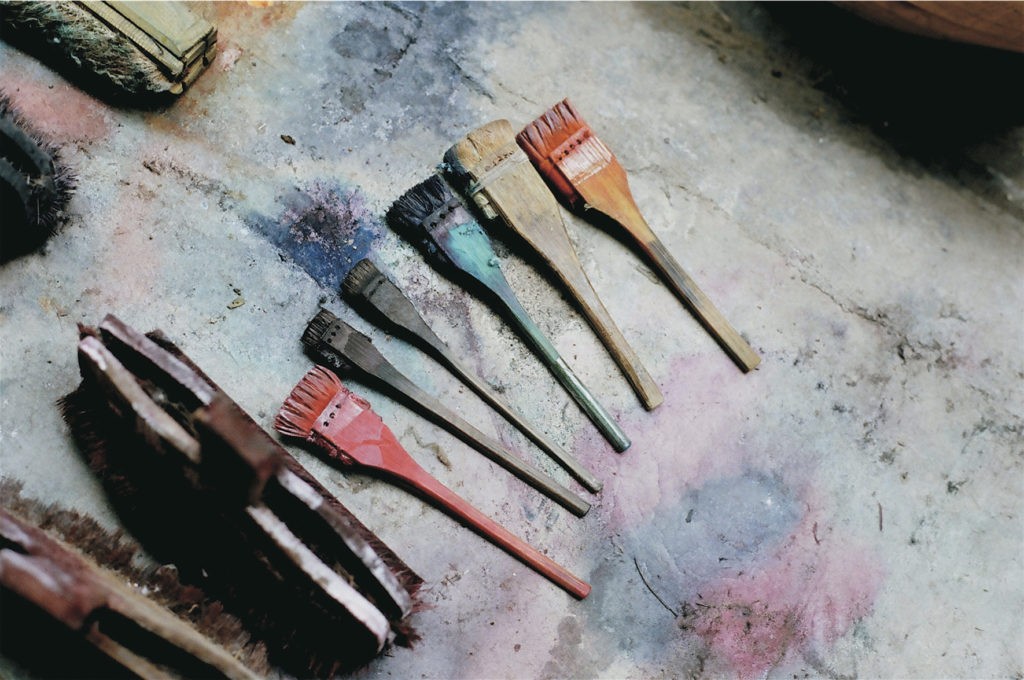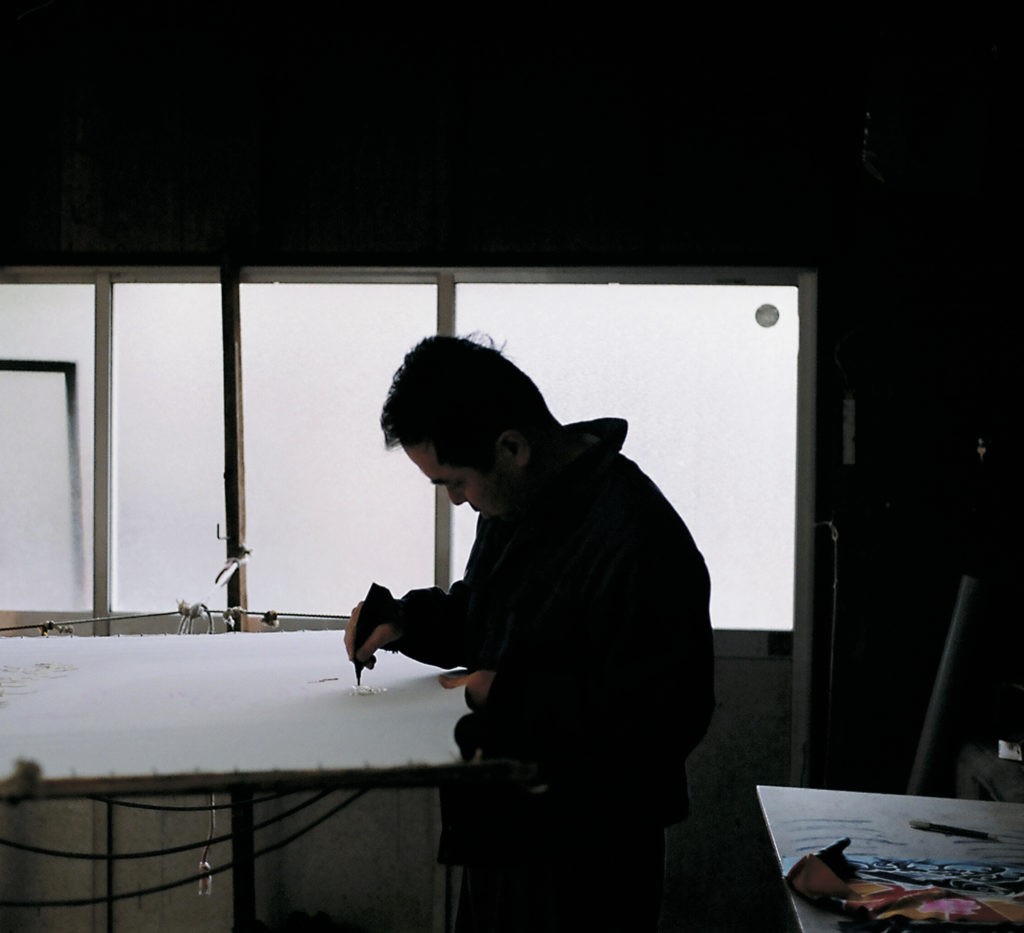
Story 01 | The Floating Peacocks
Fishing can sometimes take on mystical dimensions. In Yaizu, superstition is rife among sailors and their captains, affecting everything from the choice of bait (goldfish or plastic octopi?) to carrying a ‘funadama’ when you sail; a tiny box containing a lock of women’s hair, some dice, money and sake – symbolic links to the fishermen’s ‘other’ lives on land. But the most flamboyant example of fishing superstition is the ‘Tairyo-ki’ (fishing flags). Traditionally, whenever someone buys a new boat, their friends would have Tairyo-ki made up for the boat. The flags serve no other purpose than turning the vessel into a floating peacock to invoke as much good fortune as possible. Things used to be much more utilitarian.

“Originally flags were used by fisherman in the same way CB radio is used today,” says Hiroyuki Takahashi, owner of the 120 year old ‘Takahashi Somemono-ten’ dying shop, “one flag would let other ships know where the fish were or if there were no fish that day another flag would be used.” In those days the shop was used for Kimono dying and it would be another ten years once high quality German dye’s made their way to Yaizu- before his grandfather began experimenting with fishing flag designs. “I even remember my father constantly making Tairyo-ki when I was young,” he says, continuing to work on a flag. A white canvas is stretched tight with hooks and he is painting on the first round of glues, which the dyes will work around. Paint tins, stencils, brushes and dying detritus clutter the space.

“Yaizu culture has changed though,” he begins washing one of the flags, “I don’t get the chance to make many Tairyo-ki anymore.” The flags he makes now are for “sports teams, companies, farmers and even newborn babies.” The city has transformed, and it is easy to stay looking over your shoulder at times gone by in Yaizu. But the town is more than the sum of its pasts; by some mystical process Yaizu’s residents have managed to live fully in the present without letting go of their traditions.
< From Papersky no.32(2010) >












